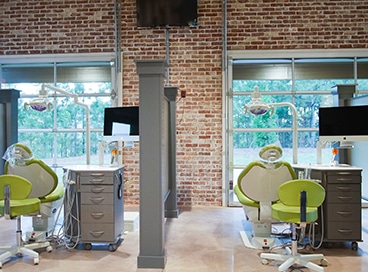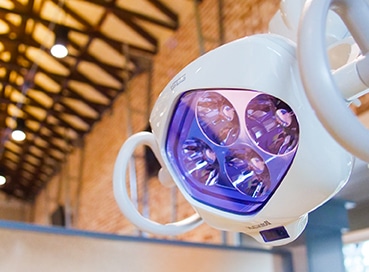The Ultimate Guide To Orthodontics
Table of ContentsThe Definitive Guide for OrthodonticsThe 10-Second Trick For OrthodonticsAll about OrthodonticsSome Known Details About Orthodontics Some Known Details About Orthodontics The Of Orthodontics10 Simple Techniques For Orthodontics
You might really feel some pain for a while when your dental braces are first placed on and when they are readjusted. It will take a little time to get made use of to your braces and they can bother your lips and cheeks - Orthodontics. If this occurs, an alleviation wax can be applied to your bracesIt is essential to brush your dental braces as well as the front, back and chewing surface areas of the teeth. Your dental expert or orthodontist will give you pointers on just how to brush and on exactly how to floss using floss threaders. After flossing, roll it up in a tiny round and put it in the garbage.
Moms and dads must oversee their children to see to it they do a great job cleaning their teeth and braces and adhere to the guidance of their dental expert or orthodontist. If you have dental braces, do not attack on difficult things such as ice and nuts. Do not chew the ends of pens or pencils.
7 Simple Techniques For Orthodontics
Problems that are not repaired can create the therapy to last much longer. Todays dental braces are smaller sized and much less visible. The standard metal braces, there are tooth-coloured ceramic braces that are much less obvious. Clear aligners are likewise offered for grownups. Braces and elastics can likewise be multicoloured. Speak with your dental practitioner or orthodontist about all your choices.
It overviews the direction of tooth movement and jaw growth in someone who is still growing. There are various sorts of headwear and they may be worn during any type of component of the orthodontic therapy. Your orthodontist or dental professional will certainly reveal you just how to put on the headgear and inform you just how long to wear it daily.
Orthodontics - The Facts
They might require to be put on all the time or part of the moment. Tooth removal may be required if your teeth are crowded or if a tooth is severely out of position. Jaw surgery (or orthognathic surgery) may be required when there are significant differences in the dimension or position of the upper and reduced jaws.
An orthodontist is a dental expert educated to diagnose, avoid, and deal with teeth and jaw irregularities. They fix existing problems and are educated to recognize problems that may develop in the future. Orthodontists function with individuals of any ages, from youngsters to adults. Individuals often associate a perfect smile with healthiness.
What Does Orthodontics Mean?
All orthodontists are dental professionals, but not all dentists are orthodontists. Orthodontic residency programs use intensive, concentrated instruction for oral experts. They concentrate on 2 locations: Exactly how to properly and safely relocate teeth Just how to effectively lead development in the teeth, jaw, and faceOnce an orthodontist has actually finished training, they have the alternative to end up being board licensed.
Not known Details About Orthodontics
If you have only small malocclusion, you might be able to utilize clear braces, called aligners, instead of conventional dental braces. Some individuals need a headwear to help move teeth into line with pressure from outside the mouth. After braces or aligners, you'll need to put on a retainer. A retainer is a custom tool that maintains your teeth in area.
They're usually utilized on children. They can produce added room in the mouth without having to draw teeth. If you have a major underbite or overbite, you could need orthognathic surgery (additionally called orthodontic surgical procedure) to lengthen or shorten your jaw. Orthodontists use cables, surgical screws, or plates to sustain your jaw bone.
The Facts About Orthodontics Revealed

Orthodontists might carry out surgical treatment, exams,X-rays,and even more to aid you attain a much more comfy, much healthier smile. An orthodontist is concentrated on your bite, so something like a damaged tooth would certainly be handled by a dentist. Orthodontists are dental experts however not all dental experts are orthodontists. Orthodontists are concentrated on your bite, or the way your teeth meshed, and the straightness of your teeth.
A stunning smile can be an excellent possession. It makes you feel great and aids you develop relationships with official statement your peers. Among the signs of a beautiful smile is a healthy and balanced set of teeth and good oral health. Many people have gapped, misaligned, irregular teeth that can make them incomplete.
The Main Principles Of Orthodontics
Attending to orthodontic issues beforehand can also prevent issues like jaw pain and gum disease, making certain long-lasting oral wellness. Orthodontic treatment is known for its capacity to transform smiles, yet its advantages prolong past plain aesthetics (Orthodontics). From promoting better oral wellness to improving self-esteem, can greatly affect people' lives. A few of these benefits are: Among the considerable orthodontic appliances is that it initiates a transformative procedure past tooth positioning.

These changes he said are essential for preserving development and guaranteeing the therapy stays on track according to the recognized strategy. The orthodontist establishes a customized procedure plan based on the diagnostic records and the individual's unique needs and preferences. This strategy lays out the suggested action to attend to the identified orthodontic issues and achieve the desired result.